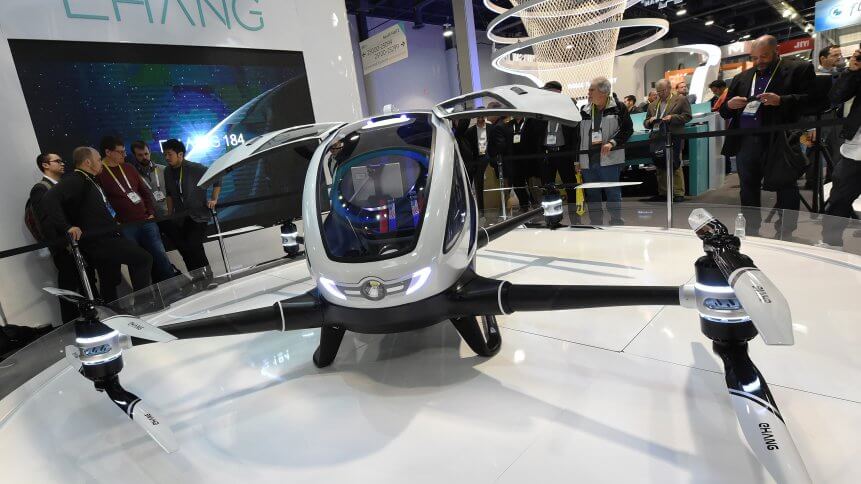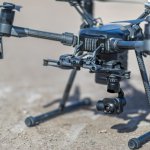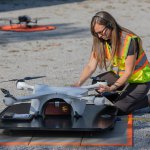‘Massive’ growth in commercial drones could follow new ICO approval

With the ability to glide over congested city streets and access hard-to-access locations, drone technology’s potential, particularly in disrupting last-mile deliveries, has spurred an R&D race by tech giants and logistics firms alike.
The technology is certainly ‘there’, but so far its deployment has been at the mercy of regulator caution. That’s not surprising, given the risks associated with flying high-powered lumps of circuitry and rotor blades— and packages— around dense population centers and urban furniture.
Still, the doors to commercial drone flights are creaking open; in October, the Federal Aviation Administration (FAA) gave delivery firm UPS the greenlight to being operating its Flight Forward drone airline, ahead of similar endeavors by Amazon Air, Uber Eats and Google Wing.
Today, another regulatory milestone has been achieved. The ISO (International Organization for Standardization) has announced the world’s first approved drone standards, and they are expected to stimulate “massive growth” in the use of drones by organizations in the coming years.
However, a key point of the standards is that all drone flights— including autonomous operations— will require human intervention.
Drone ‘etiquette’
According to the ISO, the approval follows a 12-month period of consultation with drone professionals, academics, businesses, and the general public. The standards represent an “important first step” in establishing drone “etiquette”.
That includes reinforcing compliance towards no-fly zones, local regulation and flight log protocols, maintenance, training and flight planning documentation. Social responsibility is also at the heart of the Standards, which strengthens the responsible use of a technology that aims to improve and not disrupt everyday life.
The effectiveness of the Standards in improving air safety will be further strengthened by the continuing rapid development of geo-fencing and counter-drone technology, providing frontline protection against ‘rogue’ drone operators— the likes of which led to UK international airport Heathrow coming to standstill this year.
YOU MIGHT LIKE

Tech-keen utilities firms ready to embrace 5G
The Standards also seek to address public concerns surrounding privacy and data protection, demanding that operators must have appropriate systems to handle data alongside communications and control planning when flying.
Significantly, the fail-safe of human intervention is required for all drone flights, including autonomous operations, ensuring that drone operators are held accountable.
Transformative potential
Built on a “background of reassurance on safety and security”, the standards are expected to shape regulation and legislation decisions going forward.
“Drones are a transformative global phenomenon, offering an unprecedented economic opportunity for those businesses and countries with the foresight to embrace this technology,” said Robert Garbett, Convenor of the ISO Working Group responsible for global air drone operational Standards, Chairman of the BSI Committee for UK Drone Standards.
“My own conversations with Government, businesses and other stakeholders have shown that the new Standards will be enthusiastically welcomed and will empower organizations to discover how they can use drone technology to enhance their competitive position, adding value and creating growth and jobs.”
Garbett added that the standards will deliver “new confidence” among investors in the safety, security, and compliance of commercial drone operations, which alongside further regulations in manufacturing and maintenance, will pave the way for a “massive expansion” in the availability and use of drone technology in the years to come.
These seed-firing drones plant thousands of trees each day. Watch the latest in our award-winning video collaboration with @WWF #Netflix #ShareOurPlanet #VoiceForThePlanet
📕 Read more: https://t.co/2n1VIPvpdt pic.twitter.com/sSI5Bllh19
— World Economic Forum (@wef) December 4, 2019
Outside of the delivery space, drones are already showing that they can provide solutions to pressing economic, transport, security, environmental and productivity challenges faced by governments and industry throughout the world.
One of the key benefits is reducing congestion, pollution, and accidents on the roads, by reducing the need for automobiles and infrastructure to support them. Other enterprise uses include surveying and maintenance in agriculture, construction, and energy— including, for example, carrying out inspections and repairs on offshore windfarms.
In the future, use cases could even extend to passenger transportation.
According to Goldman Sachs’ Drones Reporting for Work report, the global drone industry could reach a worth of US$100 billion by 2020. Most recently, analysts at Barclays estimate that the global commercial drone market will grow tenfold from US$4 billion in 2018 to $40 billion in five years, and result in cost savings of some $100 billion.









